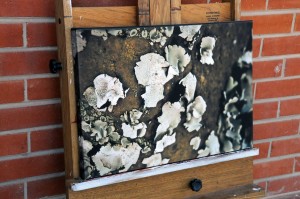Are your art pieces hanging on your wall or stored away being enjoyed by no one? Would you like to have a stylish gallery with luxurious stretched canvas prints (like these) of your treasured pieces but can’t afford one? It is a pity to keep your inspiring artwork hidden from society, after you poured soul into those creations. If you are like most artists, you want your designs and prints to be found in art shows, galleries, the Internet, local shops, corporate buildings, restaurants or businesses, just to mention a few. There is a huge demand for reproduction prints nowadays, as not many people can afford to buy originals. Would you like to pursue this endeavor but don’t know where to start? I’ve come up with a short list of tips to create cost-efficient prints of your unique artwork. Here’s a look:
Tip 1: Go for Quality Printers
In order to successfully reproduce your artwork, you must keep in mind that collectors are looking for quality reproductions, therefore, invest money in a professional-grade printer that uses archival pigment links. I went for an affordable, yet innovative Epson Stylus Photo R2880. Back in 2009 it retailed for $1,300. You can also purchase an Epson printer that doubles as a scanner.
Tip 2: Scan Your Artwork
Scan your prints at 600 dpi. This lets you offer enlarged sizes from pieces that measure 8×10. The Epson printer can actually deal with paper up to 19″ wide. An 8×10 artwork scanned at 600 dpi can be read as a 16×20 print at 300 dpi, the quality standard for printing. If you have a print project that requires special treatment, I recommend custom printing. Also, make sure to scan your artwork before sealing or varnishing your canvas in order to avoid dealing with the reflective glare of the varnish.
Tip 3: Use Photoshop
After you have scanned your work and have saved the original copy, use Photoshop to adjust the levels a little. This step is vital as acrylic paints sometimes reflect the scanners light, making it dark gray. In addition, get rid of unwanted blemishes such as scratches in the paint, brush hairs, stray pencil lines and dust particles.
Tip 4: Crop Your Artwork
After you save the file, get ready to crop your artwork into several standard print sizes and custom sizes for product templates such as bookmarks. These standard print sizes could be 5×7, 8×10 or 11×14.
Tip 5: Print, Print, Print!
Print in bulk quantities to stock up for new galleries or craft shows or any future orders that you receive. I have been extremely satisfied with the quality of print that the Epson printer creates. By complying my guidelines, your reproductions will be as high-quality as those ordered from a professional offset printer. Just follow the continuous cycle of creating, scanning and printing day in and day out. I hope this information comes in handy. Keep in mind that, in order to reproduce a diversity of prints without breaking the bank, you can follow these aforementioned tips to DIY. Are you ready to start producing gorgeous reproductions of your artwork and sharing it across the globe? What are you waiting for? 
Credit: Erin Dugan, Photography and Large Format Prints on Behance
Leave a Reply